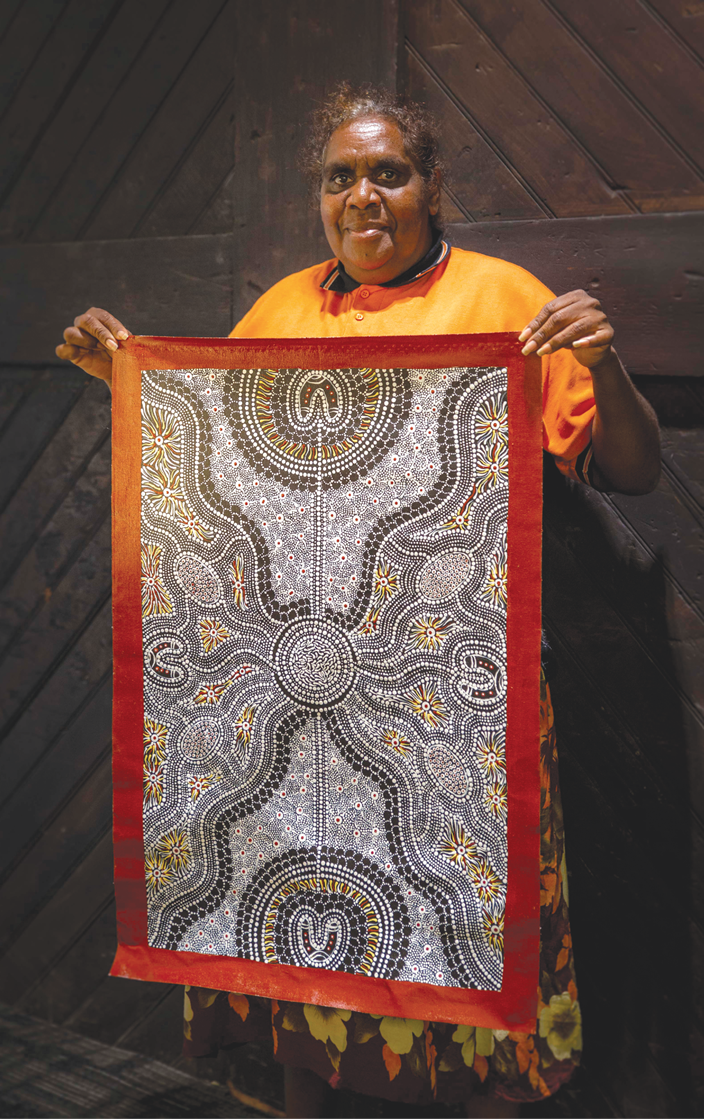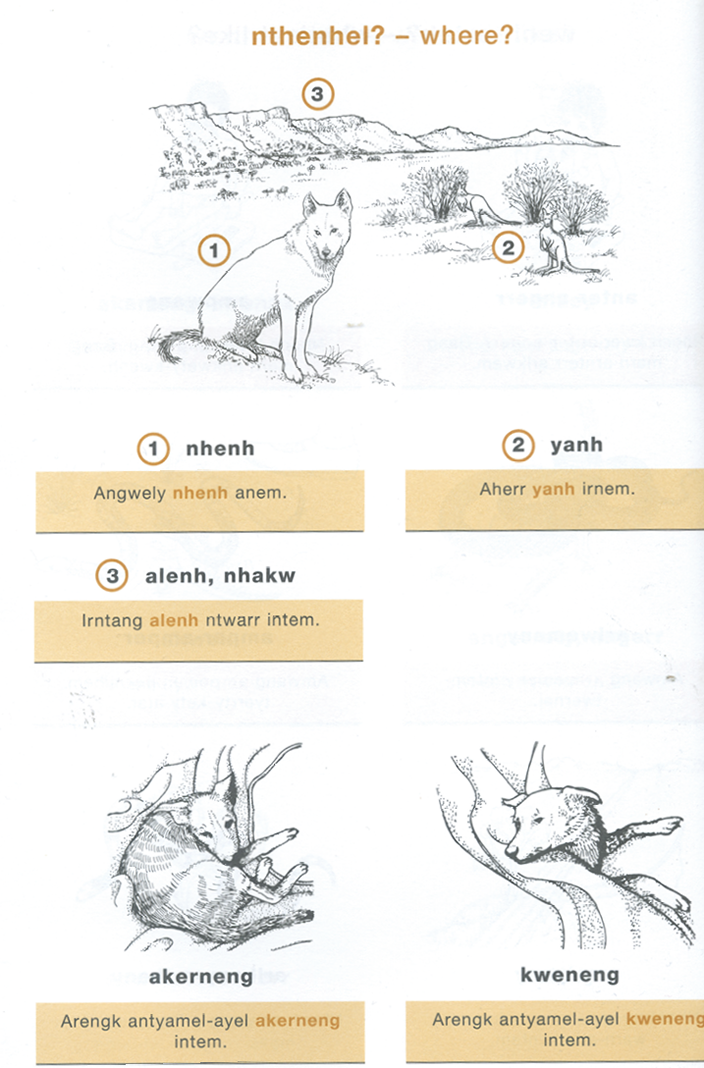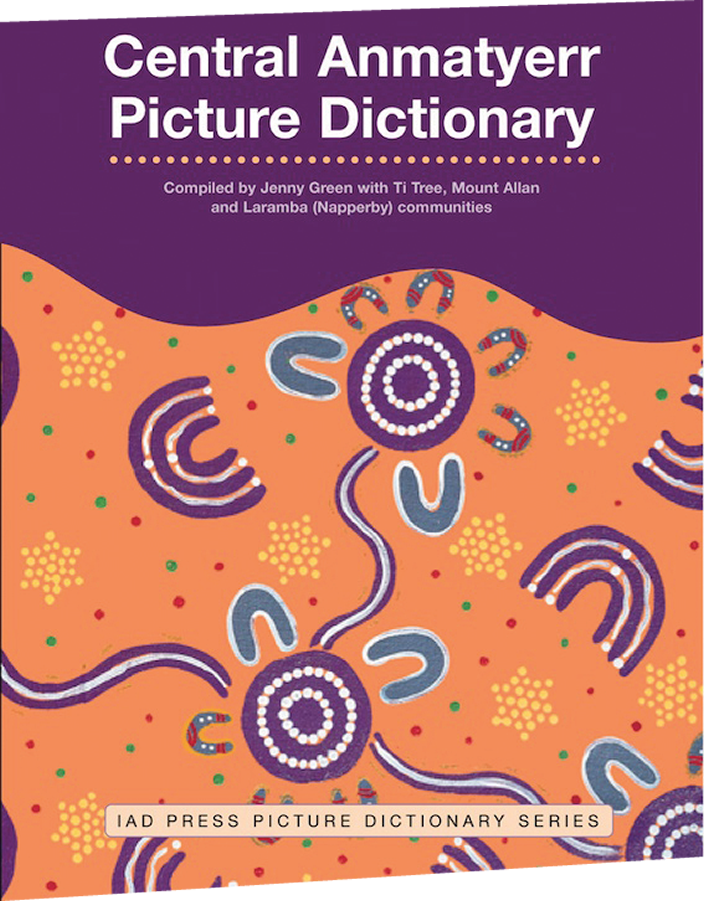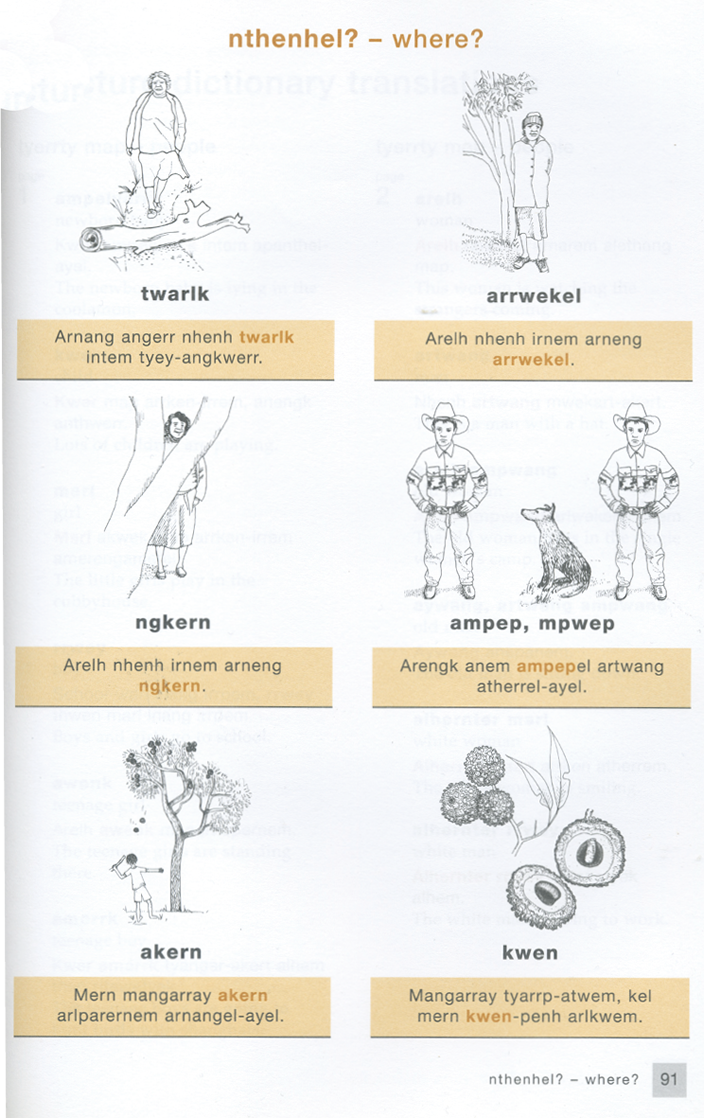There’s a wraparound image created by April on the cover of the Central Anmatyerr Picture Dictionary. In talking about this image April explains “I made this painting with the three places in it – Napperby, Ti Tree and Mount Allan. At first the schools from these places got together to talk about the idea of making an Anmatyerr language book. We wanted to make the book so that future generations of children could learn to write Anmatyerr – so that they would not lose their language. The children of the future will be able to read and write our language.”
April’s influence extends much wider than this tiny Ti Tree community, as she also teaches art and works as a cultural advisor with three NSW schools which take Aboriginal boarders: The Scots School Bathurst, Meriden School Strathfield and Trinity Grammar School Summer Hill.
Teachers from these schools visit Ti Tree for cultural awareness training and April makes the long trip to Sydney to visit the schools, spending time with staff and students.
She said it was crucial for teachers to have more confidence and understanding of Aboriginal culture and language, to share with all students and make sure boarding students’ needs are understood.
April says: “The Elders used to tell kids stories on the sand. Today we are putting stories on canvas but using the same techniques. We’re still hunting witchetty grubs, goannas and kangaroos and the canvases show it. Like the sand pictures, the canvases don’t depict the whole animal, just their footprints.
“Teaching dot painting helps bring the past and present to life for students and makes language come alive too.”
The IEUA NSW/ACT Branch has purchased one of April’s paintings, which helps her continue her life’s work.
The title is Women Dreaming, and on the back of the canvas April has written: “This painting is about women hunting. They are hunting for bush foods, women are hunting around the waterholes so they can find witchetty grubs, bush berries, bush onions and bush plums”.
For additional Aboriginal language, arts and culture books see https://iadpress.com











































































































































